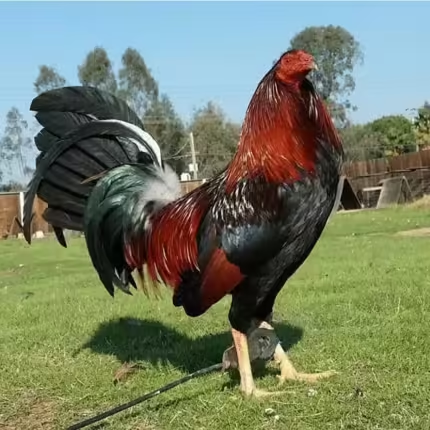

Rare Color Varieties Peafowl
$50.00 – $800.00Price range: $50.00 through $800.00
Unveiling Rare Color Varieties Peafowl: A Deep Dive into Genetics, Breeds, and Breeding Secrets
Rare Color Varieties Peafowl boast some of the most breathtaking plumage mutations in the avian world, yet understanding the genetics behind white, cameo, purple, or even Sonja’s Violeta peafowl can seem daunting. This guide offers practical insights into species differences, color and pattern mutations, genetic inheritance, and responsible breeding practices, empowering enthusiasts and breeders to achieve predictable results.
You’ll discover the three primary peafowl species, explore the most sought-after color mutations recognized by the United Rare Color Varieties Peafowl Association, examine pattern variations, and learn how sex-linked, recessive, and leucistic genes influence these magnificent birds. A dedicated section on the Spalding peafowl hybrid reveals its origins and distinctive characteristics, while visuals, infographics, and interactive simulators bring genetics to life.
Finally, market trends and conservation concerns for the endangered Green and vulnerable Congo peafowl underscore the importance of careful stewardship.
By the end of this guide, you’ll have a clear strategy for cultivating rare color varieties—from selecting the perfect parent birds to deciphering Punnett squares—with both confidence and accuracy.
What Are the Core Peafowl Species and Their Distinctive Colorations?
The three recognized peafowl species—Indian Blue (Pavo cristatus), Green (Pavo muticus), and Congo (Afropavo congensis)—each possess unique wild-type plumage that serves as the canvas for all mutation breeding. The Indian Blue displays classic iridescent cobalt-blue body feathers and bronze-green train “eyespots”; the Green Rare Color Varieties Peafowl exhibits a highly reflective emerald and gold mosaic across its body and train; and the Congo peafowl features more subtle bluish-green feathers and smaller trains with bronze accents. These foundational color traits dictate how specific mutations manifest and whether novel varieties can emerge through crossbreeding.
Here’s a comparison of the three species’ key attributes:
| Species | Native Region | Wild-Type Plumage | Conservation Status |
|---|---|---|---|
| Indian Blue | South Asia | Iridescent blue body, bronze eyespots | Least Concern |
| Green | Southeast Asia | Metallic green-gold body, green eyespots | Endangered |
| Congo | Central African Rainforest | Bluish-green body, bronze-accented train | Vulnerable |
While the Indian Blue is the origin of most color mutations, understanding the genetic stability of Pavo muticus and Afropavo congensis is crucial for ambitious hybrid projects. Exploring species diversity leads us into a detailed analysis of color mutations.
Which Peafowl Species Are Officially Recognized for Their Varieties?
The United Peafowl Association officially recognizes three main species—Indian Blue, Green, and Congo peafowl—each providing the foundational genes essential for developing mutations and undertaking hybridization efforts.
What Sets Indian Blue, Green, and Congo Peafowl Apart?
Indian Blue Rare Color Varieties Peafowl (Pavo cristatus) are distinguished by their deep cobalt-blue feathers and patterned train eyespots. Green peafowl (Pavo muticus) boast a metallic emerald sheen and lack the common mutation lines found in Indian Blues. Congo peafowl (Afropavo congensis) are more modest in size and coloration, offering unique bronze-green hues but exhibiting fewer spontaneous mutations.
How Do Species Differences Impact Color Mutations?
Species-specific pigment pathways and gene pools influence the frequency of mutations. The rich iridescence of the Indian Blue frequently yields recessive and sex-linked variants, whereas Green and Congo peafowl typically require deliberate crossbreeding to introduce novel color alleles.
What Are the Most Coveted and Uncommon Peafowl Color Mutations?
Color mutations arise from genetic alterations in pigment deposition and structural coloration processes, offering breeders a range from common white and cameo varieties to exceptionally rare Sonja’s Violeta and indigo morphs. Understanding the genetic basis of each mutation allows for precise pairing and predictable offspring.
The following table highlights three signature mutations:
| Mutation | Inheritance Pattern | Visual Characteristics | Rarity Level |
|---|---|---|---|
| White | Autosomal recessive | Completely white plumage, blue-grey eyes | Moderate |
| Cameo | Sex-linked recessive | Creamy brown body, diminished iridescence | Rare |
| Purple | Sex-linked dominant | Intense lavender sheen over a blue base | Very Rare |
Other notable mutations include:
- Charcoal: Deep grey-black plumage with muted train eyespots.
- Opal: Soft blue-grey body with a pearlescent sheen on the train.
- Bronze (Buford Bronze): Warm bronze body with subtle greenish highlights on the train.
These variations expand the breeding palette, leading us to discuss ultra-rare varieties like Sonja’s Violeta and indigo peafowl.
Which Rare Color Varieties Are Officially Acknowledged by the United Peafowl Association?
The United Peafowl Association currently recognizes over ten primary color categories, including white, cameo, purple, charcoal, opal, and Buford Bronze, each meeting stringent criteria for phenotype and lineage.
How Do White, Cameo, and Purple Peafowl Differ Genetically and Visually?
White Rare Color Varieties Peafowl result from a recessive allele that inhibits pigment production (leucism). Cameo arises from a sex-linked gene that reduces iridescence, while purple involves a dominant sex-linked allele that intensifies red and blue structural colors.
The genetic basis for white and pied plumage in Indian peafowl has been extensively studied, revealing a complex series of alleles at a single autosomal locus.
Inheritance of White and Pied Plumage in Indian PeafowlThe pied, dark pied, white, and blue white-flight plumage color phenotypes are described, and their relationships to each other explained. Crosses among and between these phenotypes and the wild-type blue indicate that a single autosomal locus is responsible for all of these phenotypes. The white mutant allele (W), when homozygous, produces an all-white plumage. This allele is shown to be a weakly incompletely dominant allele with approximately 60% penetrance when heterozygous with the wild-type allele (W+), and this combination produces the blue white-flight phenotype.
The pied phenotype does not breed true but produces whites, pieds, and dark pieds in a 1:2:1 ratio. Dark pieds breed true with approximately 79% penetrance, and when bred to whites, produce all pieds. Thus, pieds are heterozygous for two mutant alleles (W/Wpd). In this three-allelic series, the white allele (W) is the most dominant and the dark pied allele (Wpd) is the most recessive (W > W+ > Wpd).Inheritance of the White and Pied Plumage Color Patterns in the Indian Peafowl (Pavo cristatus), Unknown Author, 1993
What About Other Notable Colors Such as Charcoal, Opal, and Bronze?
Charcoal peafowl exhibit a mutation heavy in eumelanin, producing dark grey feathers. Opal features a diluted leucistic effect, resulting in pearly blues. Buford Bronze displays a rare pheomelanin shift, yielding warm bronze tones. Each mutation can be traced to unique chromatic gene variants.
How Rare Are Mutations Like Sonja’s Violeta and Indigo Peafowl?
Sonja’s Violeta remains one of the most recently identified and least common mutations, characterized by an intense violet overlay on blue plumage. Indigo Rare Color Varieties Peafowl share similar deep-blue shifts but occur with an estimated frequency of one in a million hatchlings, making them highly prized breeding achievements.
How Do Peafowl Pattern Mutations Influence Appearance and Breeding?
Pattern mutations alter the distribution of iridescent ocelli and the background body coloration. These variations not only create striking visual effects but also follow specific inheritance pathways, significantly impacting pairing strategies for breeders.
Common pattern mutations include black shoulder (solid-winged) and pied effects, both introducing distinct patches of white or dark coloration.
What Are Common Pattern Mutations Like Black Shoulder and Pied?
The black shoulder mutation results in solid dark wing feathers, replacing the typical barred pattern. Pied Rare Color Varieties Peafowl display random white patches across their body and train, a result of autosomal recessive alleles that disrupt pigment cell migration.
How Do White-Eyed and Silver Pied Patterns Differ?
The white-eyed pattern features ocelli with white centers due to a leucistic gene. Silver pied combines the white-eyed and pied genes, producing mostly white birds with scattered colored patches and a silvery sheen.
What Are the Genetic Foundations of These Pattern Mutations?
Black shoulder follows autosomal dominant inheritance. Pied and white-eyed mutations require recessive leucistic genes, while silver pied results from epistatic interactions between multiple pigment-influencing alleles.
How Does Rare Color Varieties PeafowlGenetics Illuminate Color and Pattern Inheritance?
Rare Color Varieties Peafowl inheritance adheres to fundamental Mendelian principles, with modifications introduced by sex-linked loci and epistatic gene interactions. A solid grasp of these principles empowers breeders to accurately predict hatch outcomes and effectively manage genetic diversity.
What Are the Fundamental Principles of Peafowl Inheritance?
Traits segregate according to dominant and recessive alleles located on autosomal or sex chromosomes. Heterozygotes may sometimes exhibit intermediate phenotypes, such as carrying the potential for leucism (splits).
How Do Sex-Linked and Recessive Genes Affect Color Traits?
Sex-linked genes reside on the Z chromosome (in birds, males are ZZ, females are ZW). These can lead to gender-specific expression: a female carrying one allele will display the sex-linked trait, whereas a male requires two copies for recessive expression.
What Is Leucism and How Does It Differ from Albinism in Peafowl?
Leucism prevents pigment deposition in feathers, resulting in white or patchy plumage while maintaining normal eye color. Albinism, conversely, impairs melanin production throughout the body, often leading to red or pink eyes.
Recent genomic research has provided valuable insights into the genetic underpinnings of leucism in Indian Rare Color Varieties Peafowl, identifying key genes involved in pigment development.
Indian Peafowl Genome Assembly and Genetics of LeucismA draft genome of the Indian peafowl was assembled, with a genome size of 1.05 Gb (sequencing depth of 362×), and contig and scaffold N50 values reaching 6.2 and 11.4 Mb, respectively.
Comparative analysis with other avian species revealed that the Indian peafowl exhibits distinct evolutionary changes in metabolism, immunity, and skeletal and feather development.
These findings offer novel insights into the phenotypic evolution of peafowl, particularly concerning their large body size and feather morphology. Furthermore, our study determined that the phylogenetic relationship of the Indian peafowl is closer to turkeys than to chickens.
Specifically, we first identified that PMEL wasA high-quality assembly reveals genomic characteristics, phylogenetic status, and causal genes for leucism plumage of Indian peafowl, Unknown Author, 2022
How Are Punnett Squares Utilized to Forecast Peafowl Breeding Results?
Punnett squares visually map parental allele contributions to predict offspring genotype ratios and expected phenotype percentages, guiding the selection of pairs for desired color and pattern combinations.
What Are the Best Practices for Ethically Breeding Rare Peafowl Varieties?
Ethical breeding involves a careful balance of genetic health, diversity, and conservation. Best practices include rigorous parent selection, meticulous record-keeping, and attentive chick care to ensure the development of robust, healthy lines.
Key considerations for breeders focus on minimizing inbreeding while simultaneously advancing specific mutations.
How Should Parent Birds Be Selected for Desired Color and Pattern Traits?
Opt for birds with verified pedigrees that clearly demonstrate the expression of target alleles. Pairing complementary “splits” increases the likelihood of achieving desired recessive traits.
What Record-Keeping Methods Aid Successful Peafowl Breeding?
Maintain detailed logs of hatch dates, parent genotypes, resulting phenotypes, and health observations. Digital databases significantly enhance traceability and long-term strategic planning.
How Can Peachicks Be Cared for to Ensure Healthy Development?
Provide a temperature-controlled brooder, a balanced diet rich in protein and calcium, and a gradual introduction to the flock to promote strong bone development and robust immune function.
What Ethical Considerations and Conservation Issues Must Breeders Be Aware Of?
Responsible breeders monitor genetic diversity to prevent population bottlenecks, contribute to wild population conservation through awareness campaigns for the endangered Green and vulnerable Congo peafowl, and strictly adhere to animal welfare standards.
What Is the Spalding Peafowl Hybrid and What Makes It Unique?
Spalding Rare Color Varieties Peafowl are hybrids resulting from crosses between Indian Blue and Green peafowl, blending iridescent traits from both parent species to create novel color and pattern possibilities. This hybrid demonstrates remarkable genome compatibility and produces fertile offspring lines.
How Did Spalding Peafowl Originate from Indian Blue and Green Peafowl Crosses?
The initial Spalding hybrid emerged from carefully controlled crosses between Pavo cristatus and Pavo muticus, leveraging their shared chromosome numbers to combine the blue and emerald color pathways.
Genetic analysis has provided substantial evidence for hybridization between blue and green peafowl, offering valuable insights into their evolutionary history and conservation needs.
Genomic Insights into Hybridization Between Blue and Green Peafowl and the Genetic Basis of Leucistic PlumageThe blue peafowl (Pavo cristatus) and the green peafowl (Pavo muticus) are highly admired for their striking appearances, despite the endangered status of the green peafowl. The genetic mutation responsible for the leucistic plumage observed in blue peafowl (also known as white peafowl) has not yet been identified.
This study reports the generation of a chromosome-level reference genome for the blue peafowl, featuring a contig N50 of 30.6 Mb, encompassing autosomes, Z and W sex chromosomes, and a complete mitochondrial DNA sequence. Analysis of data from 77 whole peafowl genomes, 76 peafowl mitochondrial genomes, and 33 peafowl W chromosome genomes provides the first substantial genetic evidence for recent hybridization between green and blue peafowl.
We identified three hybrid green peafowl individuals within zoo samples, distinct from wild populations, exhibiting 16–34% blue peafowl genomic content. Maternal genetic analysis revealed that two of the hybrid female green peafowl possessed complete blue peafowl mitochondrial genomes.… evidence for hybridization and introgression between blue peafowl and endangered green peafowl and molecular foundation of leucistic plumage of blue peafowl, Unknown Author, 2025
What Are the Physical and Genetic Characteristics of Spalding Peafowl?
Spalding offspring typically exhibit turquoise-green body feathers with a blend of eyespot patterns from both parents. Genetic analyses reveal co-dominant expression of pigment genes inherited from each parent species.
How Are Spalding Peafowl Bred, and What Varieties Are Available?
Breeders maintain backcross lines to stabilize desired traits. Available varieties include those with turquoise trains, bronze-green bodies, and split Spalding-white hybrids, each following predictable inheritance patterns that can be mapped using Punnett methods.
How Can Visual Aids and Tools Enhance the Understanding of Rare Peafowl Varieties?
High-quality imagery, informative infographics, and breeding simulators transform complex genetic concepts into easily digestible visuals, improving comprehension and decision-making for both novice and experienced breeders.
What Types of High-Quality Images Best Illustrate Rare Peafowl Colors and Patterns?
Full-body photographs taken in natural light effectively showcase overall coloration, while close-up shots of train eyespots and feather microstructures highlight iridescent effects and intricate pattern details crucial for accurate variety identification.
How Do Infographics Simplify the Explanation of Peafowl Genetics and Mutation Patterns?
Infographics combine Punnett square diagrams with color-coded allele charts, visually mapping the inheritance pathways for sex-linked, recessive, and epistatic mutations in a clear and concise format.
Are There Interactive Tools Available to Simulate Peafowl Breeding Outcomes?
Online breeder simulators allow users to select parental genotypes and visualize the expected offspring ratios and phenotypes, thereby enhancing planning accuracy and minimizing trial-and-error hatches.
What Are the Conservation Status and Market Trends for Rare Peafowl Varieties?
Understanding the pressures on wild populations and the dynamics of market demand is essential for guiding ethical breeding practices and ensuring sustainability, balancing the premiums for rarity with conservation responsibilities.
How Endangered Are Green and Congo Peafowl in Their Natural Habitats?
Green peafowl (Pavo muticus) are classified as Endangered, with an estimated population of 10,000–20,000 mature individuals. Congo peafowl (Afropavo congensis) are listed as Vulnerable, with fewer than 10,000 adults inhabiting fragmented forest ecosystems.
What Is the Market Demand and Value for Rare Peafowl Colors?
Highly sought-after mutations, such as white and purple peafowl, typically command prices ranging from $800 to $1,500 per bird, reflecting their scarcity and the specialized breeding expertise required.
How Does Ethical Breeding Contribute to Conservation Efforts?
By preserving genetic diversity, supporting habitat restoration initiatives, and educating the public about species status, breeders can help alleviate pressure from wild capture and contribute to the long-term survival of native peafowl populations.
Peafowl breeders who integrate scientific precision with ethical principles not only produce stunning rare varieties but also champion conservation priorities for generations to come.
Continued exploration of genetics, combined with accessible visual tools and diligent record-keeping, ensures that enthusiasts can breed with both accuracy and purpose.
As awareness of the vulnerability of Green and Congo peafowl grows, responsible breeding offers a vital pathway to support wild populations through education and selective propagation.
Embracing these best practices fosters both extraordinary plumage diversity and sustainable stewardship within the peafowl community.
| Select |
Adult Male ,Adult Female ,Chicks ,Fertile Eggs ,Juveniles |
|---|
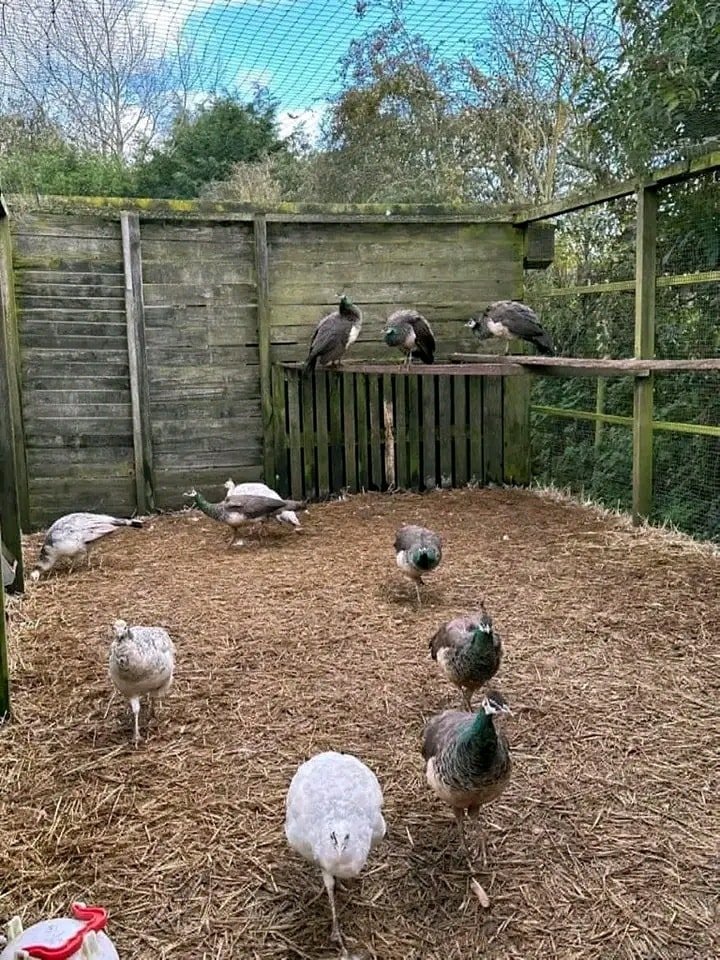
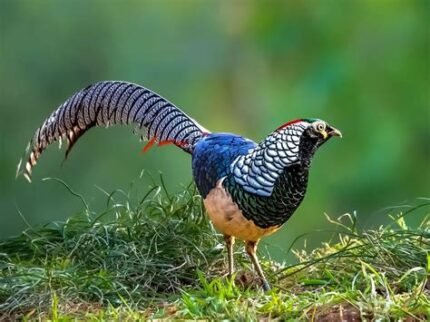
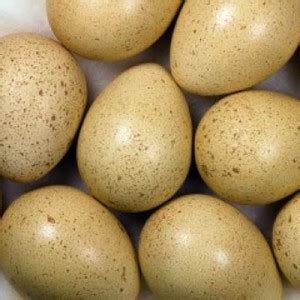
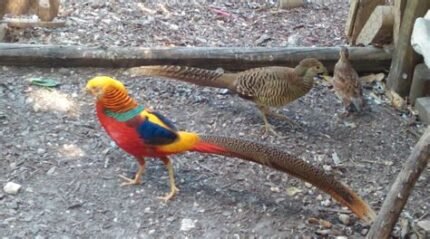
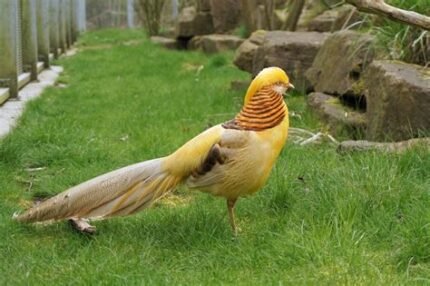
Reviews
There are no reviews yet.